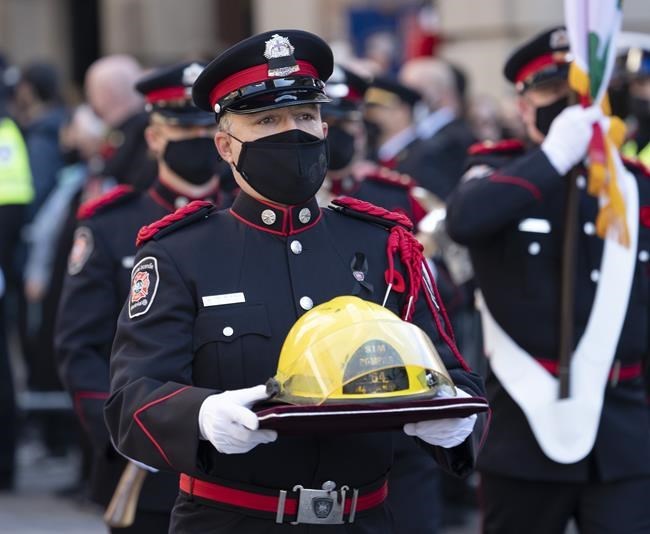MONTREAL — The Transportation Safety Board of Canada has concluded that a lack of planning contributed to the October 2021 capsizing of a rescue boat that killed a Montreal firefighter.
Pierre Lacroix, 58, drowned after the boat flipped while he and three colleagues attempted to pull a pleasure vessel carrying two people from the Lachine Rapids off the southern tip of Montreal Island.
A 53-page Transportation Safety Board report published Wednesday details the sequence of events that ended in Lacroix's death, as well as the conditions and actions that the board says contributed to the mishap.
The report notes that the fire department water and land-based units assigned to the evening rescue did not develop an action plan or perform a situation-specific risk analysis before proceeding with the operation.
"Decisions were made on the fly," the report states.
Lacroix's team on the water didn't have a strategy for when to abandon their rescue attempt and transfer the operation to another team downstream, the safety board found. While pursuing the pleasure craft, the four firefighters unknowingly entered the exclusion zone encompassing the rapids, a dangerous area where the fire department prohibits rescue operations.
They eventually tethered to the pleasure vessel and attempted to tow it out of the rapids — a manoeuvre the Montreal fire department did not allow at night — before the rescue boat lost power. The safety board says the person steering was trying to turn the boat when it struck the pleasure craft and capsized.
A frenzy ensued as the boat descended into the rapids. One of the firefighters was thrown into the 17 C water while the others, including Lacroix, were trapped under the hull. As three of them resurfaced, they scrambled to locate each other and call for help.
They were eventually rescued and treated for hypothermia. The two occupants of the pleasure vessel were rescued unharmed. Lacroix's body was found the next morning, still trapped under the boat.
His death was the subject of an investigation by the Quebec coroner's office, which found that neither he nor his three colleagues had training in whitewater operations. The coroner's 2023 report also said that the rescue operation command post lacked officers who were qualified in nautical rescues.
The Transportation Safety Board report further notes that Montreal fire department training "did not include any realistic accident simulations in which land and water units were required to participate." The units had no practice developing joint action plans as a result.
The report also says fire officials failed to effectively communicate the boundaries of the Lachine Rapids exclusion zone to nautical units.
Lacroix's death led the department to update its training for firefighters on water rescue teams and undertake a review of nautical operations. In an emailed statement Wednesday, the City of Montreal said that review is ongoing. It also pointed to the 2022 replacement of all vessels in the fire department fleet that were the same model as the rescue boat in the 2021 accident.
This report by The Canadian Press was first published Jan. 31, 2024.
Thomas MacDonald, The Canadian Press



